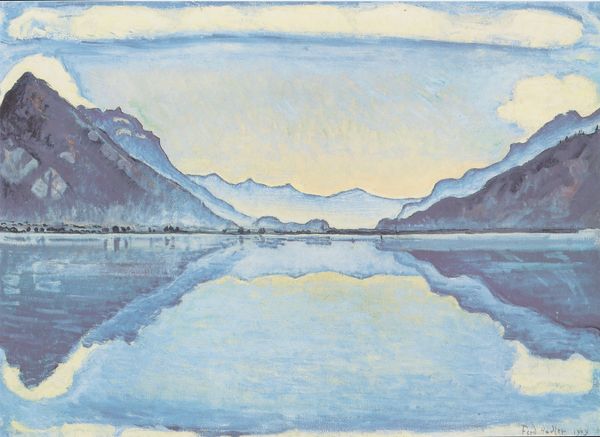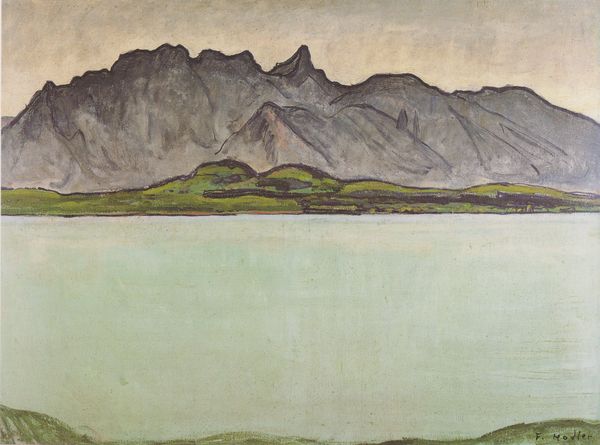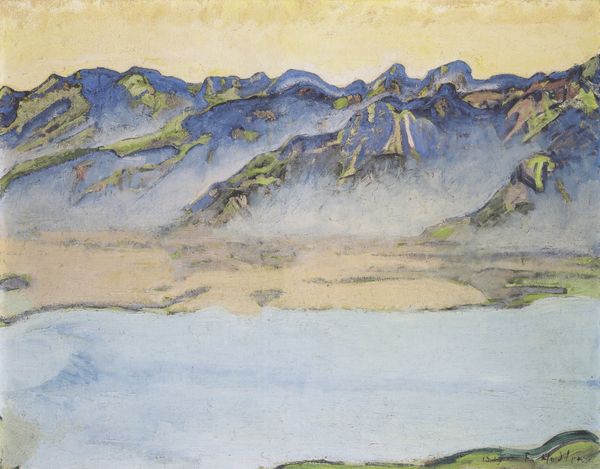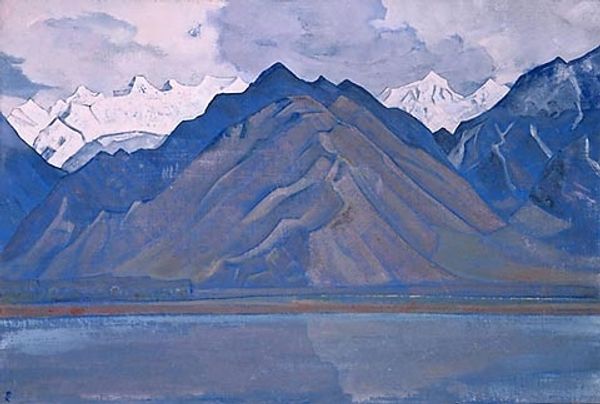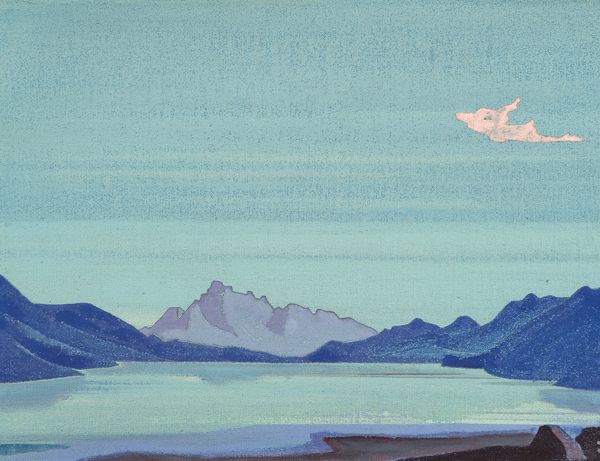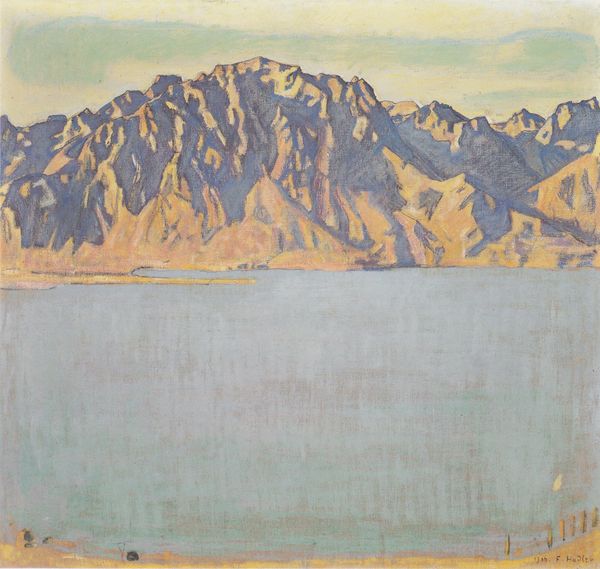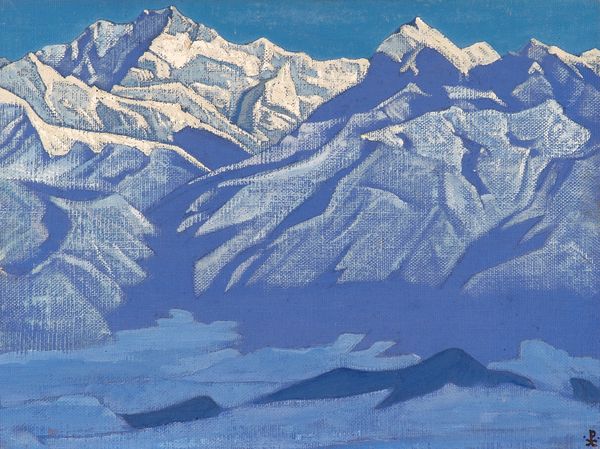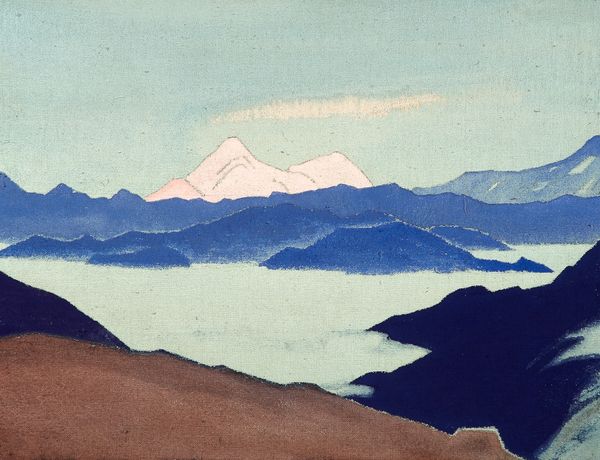
Copyright: Public domain
Curator: Ferdinand Hodler painted "Lake Thun, Symmetric Reflection" in 1905. It’s an oil on canvas, showcasing his unique approach to landscape. What strikes you most about it initially? Editor: Oh, wow, it feels so calm and meditative. The symmetry is almost unnerving, but in a soothing way? Like staring into a perfectly still pond and seeing the world duplicated. A landscape held perfectly in equilibrium. Curator: Equilibrium is a good word. Hodler was deeply invested in the concept of parallelism; he believed in nature's inherent order and reflected that through the formal arrangement of the composition. The production and arrangement of visual signs is really the subject here, reflecting the symbolic system of Hodler’s late career. Editor: It's fascinating how he's flattened the space. The mountains are rendered as these simplified, almost geometric shapes, mirrored in the water. They become decorative patterns of color, almost like he's rejecting a deep perspective. It makes me think of art nouveau designs – patterns in nature. Did he intend it to have this decorative impact? Curator: Absolutely. While Hodler was familiar with impressionistic techniques, the flattening and decorative approach moves into a post-impressionistic sphere influenced by Symbolism, it emphasizes surface and two-dimensionality. This was, in part, also related to his interests in national symbolism, in using his Swiss homeland and environment in simplified formal gestures that had direct visual impact. Editor: There is something about that simplification that intensifies it for me; not an illusion of nature, but his memory and processing of its impact. A moment suspended in the liminal space between wakefulness and sleep. And, wow, the water, its textures almost pixelated, with a surprisingly broad color palette. I can almost smell the water's crisp tang in the air! Curator: Note how that pixelation comes from his brushstrokes. It's also part of Hodler's artistic style, this labor-intensive accumulation of marks to represent light and reflection, contributing to the surface’s appeal. It's a landscape manufactured not just as representation, but as something that can be actively made and consumed as an idea. Editor: Consumed, that’s it – and pondered, too! "Lake Thun" offers us that space for meditative reflection, one constructed through a lens of almost clinical balance. It shows nature through Hodler’s structured and distilled gaze. Curator: Indeed, a gaze that acknowledges nature’s formal power alongside art’s social power to make such observations, that makes artifice of a landscape and elevates it through the making.
Comments
No comments
Be the first to comment and join the conversation on the ultimate creative platform.
